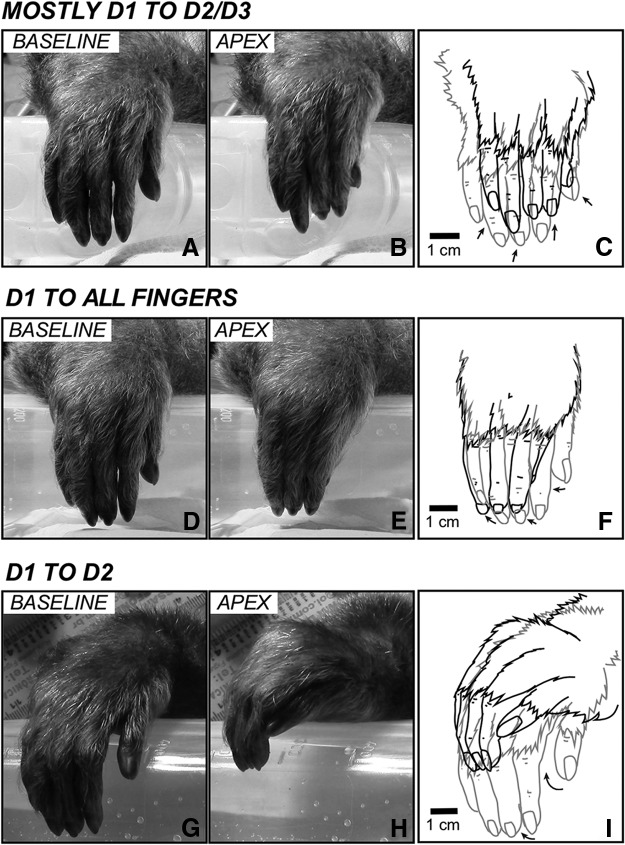Figure 9.
Examples of other types of digit movements. A–C, A movement in which there is an abduction/flexion of D1 combined with the flexion of D2 and D3, evoked by LT-ICMS at site 49 of Case 15-01 (see Figure 1-1). The distal phalange of D1 touches the distal articulation/phalange of D2 and D3. The wrist also flexes dorsally. Other digits also move. D–F, An evoked movement in which there is a flexion/abduction of all digits. The tip of D1 touches the tip of other digits. In this example, a subtle wrist pronation was also observed; site 45 of Case 15-01 (see Figure 1-1). G–I, D1 moved toward D2 and touched it laterally (the tip of D1 touches the middle phalange of D2), while all other digits abduct and the wrist flexes dorsally and laterally; site 93 of Case 15-01 (see Figure 1-1). Other conventions are the same as in Figure 6.

